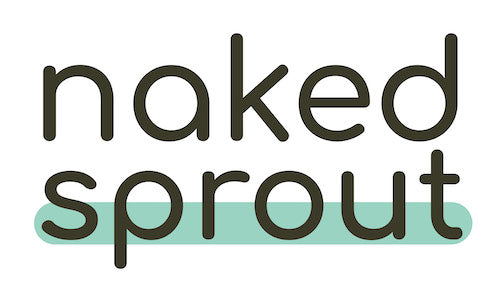How did Romans wipe their bottoms?

When you think of ancient Rome, what comes to mind? Mighty gladiators battling in the Colosseum? Temples dedicated to the gods of Mount Olympus? The marvels of their roads, walls, and aqueducts?
Whatever you’re thinking of, we bet it’s not Roman toilet habits. But ask any archaeologist, and they'll tell you that Roman sanitation is just as fascinating and telling as any of their other cultural achievements. And for our team of tissue makers at Naked Sprout, it’s the most interesting part of Roman life!
So forget the legions, laws, and literature - let’s get down to the less seen part of ancient Rome. How did Romans wipe their bottoms?

The Romans: pioneers of public hygiene
The Romans were known for their innovative civil engineering, with many of the innovations developed by Rome still in use today. Their approach to public health and sanitation was no exception, and the solutions they put in place for dealing with human waste helped to drive the growth of Rome as a city and an empire.
So why are toilet habits so crucial to human flourishing?
It comes down to population density. Dysentery, cholera, and typhoid are all diseases that are spread through dirty water, particularly where the same water is used for drinking and flushing away sewage. These illnesses have always been the bane of any settlement with a large population. Once a city gets to a certain size something has to be done to separate drinking water from waste water - if not many of the people living there are going to spend a lot of time seriously ill.
The Romans solved the problem by building aqueducts to bring fresh water into their settlements, constructing public baths for people to bathe in, and digging intricate sewer systems to carry waste away.
Let's zero in on a specific aspect of their hygiene: toilet practices.
If you ever go time-travelling to Ancient Rome and find yourself caught short, you’ll be pointed in the direction of one of the public latrines. Instead of the private stalls we are used to today, you find a series of stone seats arranged side by side, each with a keyhole-shaped opening. Unlike most cultures today, privacy in the toilet wasn’t a priority for the Romans. Using the toilet was like eating or going to the gym - an everyday activity that could be done just as well in company as it could alone!

The xylospongium - Rome’s toilet roll
Now, to the question quite literally at hand: how did Romans wipe their bottoms?
Time to meet the xylospongium, also known as the tersorium or the “sponge on a stick”. This tool, essentially a stick with a clump of sea-sponge tied to one end, was the Roman answer to toilet paper.
So how did you use a xylospongium? After doing their business, Romans would dip the sponge into a channel of running water that often ran in front of the latrines, rinse it, and then use it to clean themselves. When done, they would rinse it again and leave it in a bucket of water and vinegar, or sea water, ready for the next person.
It sounds a bit gross to us, but for the Romans, the xylospongium was an effective and logical solution. The running water and vinegar or seawater solution ensured that the sponge was clean enough, according to the standards of the day. Plus, the sea-sponges used were absorbent, soft, and readily available from the nearby Mediterranean sea, making them a sustainable and practical tool for the job.

The wonders of Roman plumbing
So you’ve done your business and you’re ready to get on with your day, but what happens to your waste?
Human waste from public and private latrines was carried away courtesy of one of the great engineering marvels of Rome, their sewerage system, the Cloaca Maxima. This system started life as a series of open-air channels, probably covered with bridges, that carried organic waste from the city to the river Tiber, which flows into the Mediterranean sea.
Over time these channels were expanded, lined with bricks, and covered over. Eventually they were connected up with the Roman system of aqueducts that brought fresh water into the city, ensuring a constant flow of water to flush waste away more efficiently. The Cloaca Maxima made life in Ancient Rome considerably more pleasant, keeping disease and smells down and ensuring clean water for the city's many public baths and fountains.
In fact, the Roman sewerage system was such a success that it was imitated widely by civil engineers in other cities in the Roman Empire. One such example is the sewer system in Eboracum, a small roman fort town on the Northern edge of the empire, which flowed from aqueducts and baths, under public latrines, and into the nearby river.
The sewer was so well-built that part of it still survives, in fact, you can still go and visit these ancient Roman sewers in York, which is what Eboracum is called today. And archeologists found remains of sea-sponges in these ancient sewers as well, suggesting that the people of ancient York were no strangers to the practicalities of a sponge on a stick!

Final thoughts
It might seem less than hygienic to modern toilet-goers, but the xylospongium serves to demonstrate the way that everyday technology reflects cultural attitudes to cleanliness, privacy, and community. It also shows that the Romans, for all their marvels and grandeur, dealt with the same basic needs and challenges that we do.
From the mighty aqueducts to the humble sponge on a stick, the Romans’ approach to hygiene was a blend of practicality and ingenuity that helped pave the way for the modern systems of sanitation we have today. And who knows? Perhaps centuries from now, future generations will look back on our bathroom practices with the same mix of curiosity and amusement.
Want to impress any passing time-travellers with the UK’s most sustainable toilet paper?




